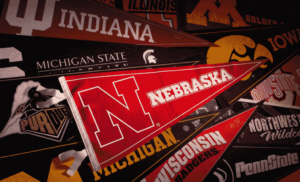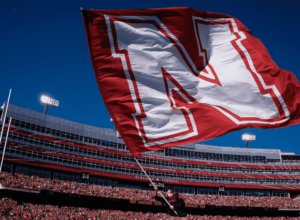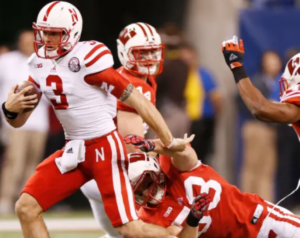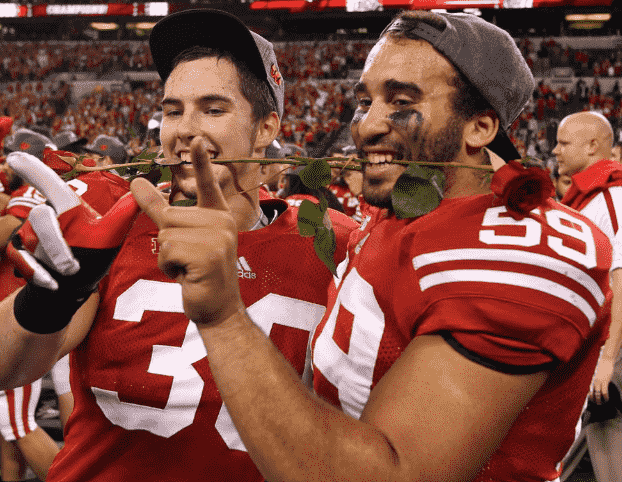Unveiling the Big Ten Conference’s Evolution: Expansion with Oregon and Washington
The landscape of the Big Ten Conference is undergoing a transformative shift, marked by a strategic realignment that refutes any rumors of the University of Nebraska’s departure. Instead, the conference is set to welcome Oregon and Washington from the Pac-12, solidifying its position as a powerhouse in collegiate athletics.1
Table of Contents
The Big Ten’s Bold Move: A Shift to 18 Teams
Contrary to speculations, the University of Nebraska is not bidding farewell to the Big Ten. Rather, the conference is gearing up to accommodate four new members, with Oregon and Washington leading the expansion charge. This move will propel the Big Ten to a formidable assembly of 18 teams, showcasing its commitment to growth and competitiveness.
Embracing Change: Nebraska’s Official Response
In light of these transformative changes, the University of Nebraska has issued a resounding joint statement. President Ted Carter, UNL Chancellor Dr. Rodney Bennett, and Vice Chancellor/Director of Athletics Trev Alberts collectively express their enthusiasm for the expansion.
This official communication underscores the historical significance of this moment, both for the Big Ten Conference and the University of Nebraska.
A Historic Moment for the Big Ten
The joint statement emphasizes the pivotal role that the Big Ten Conference plays in the dynamic landscape of college athletics. It positions the conference as a trailblazer, adapting to the evolving nature of collegiate sports.
The addition of Oregon and Washington, along with the confirmed inclusion of UCLA and USC in 2024, further solidifies the Big Ten’s standing as a premier conference.
As college athletics continue to evolve, the Big Ten remains at the forefront, navigating the changing tides with strategic realignment. The infusion of new teams not only expands the conference but also enhances its competitive edge. This proactive approach ensures that the Big Ten stays ahead in the ever-shifting landscape of collegiate sports.
Also Read: Dee Ann Warner Missing News: Dee Ann Warner Husband Arrested And Charged And Family Response
Unveiling the Big Ten Integration: Nebraska’s Momentous Move
In a groundbreaking shift that redefined collegiate athletics, Nebraska seamlessly entered the prestigious Big Ten on July 1, 2011.
keep knockin’ pic.twitter.com/rLNp5WoULw
— Nebraska Soccer (@HuskerSoccer) November 24, 2023
The journey commenced on June 11, 2010, when Nebraska took the decisive step of applying for Big Ten membership. This strategic move was driven by the university’s vision to enhance its athletic standing and contribute to the vibrancy of the Big Ten community.
The application, reflecting Nebraska’s commitment to excellence, paved the way for a pivotal decision that would shape the future of collegiate sports.
Unanimous Approval: A Defining Moment
The anticipation climaxed when the Big Ten conference unanimously approved Nebraska’s membership request. This momentous decision, made by conference officials, resonated as a testament to Nebraska’s athletic prowess and its alignment with the values upheld by the Big Ten. On this historic occasion, Nebraska proudly became the 12th school to join the esteemed conference.

Beyond 12 Teams: Big Ten’s Strategic Vision
At the core of this expansion was the Big Ten’s forward-thinking approach. While welcoming Nebraska into the fold, conference officials emphasized that, at that time, there were no immediate plans for further expansion beyond the 12-team structure.
This assurance showcased the deliberate and strategic nature of the Big Ten’s decisions, setting the stage for a new era in collegiate sports.
Nebraska’s integration into the Big Ten marked the inaugural wave of expansion for the conference. The move was not merely about numbers; it was a synergy of athletic legacies, traditions, and a shared commitment to excellence.
The significance of this integration rippled through the landscape of collegiate athletics, leaving an indelible mark on the history of both Nebraska and the Big Ten.
Unveiling the Legacy: Nebraska Cornhuskers and Their Storied Athletic Journey
The Nebraska Cornhuskers, affectionately known as the Huskers, stand proudly as the premier sports representatives of the University of Nebraska–Lincoln.
Competing vigorously in the NCAA Division I as esteemed members of the Big Ten Conference, this athletic powerhouse boasts 22 varsity teams, showcasing their prowess in a diverse array of sports, ranging from the gridiron of football to the finesse of basketball and volleyball.
In delving into the annals of the university’s athletic saga, one encounters a tapestry woven with illustrious history and an array of team monikers that have evolved over time.
Evolution of Identity: From Antelopes to Cornhuskers
The early years witnessed a carousel of team names, each contributing to the rich heritage of Nebraska’s sports legacy. The Antelopes, Old Gold Knights, Bugeaters, and Mankilling Mastodons all graced the stage.

However, it was in 1899 that the term “Cornhuskers” emerged, etching its place in history. This designation was officially embraced by the university in 1900 and later adopted by the entire state of Nebraska in 1945.
Missouri Valley Era: A Stalwart Presence
For a staggering 89 years, Nebraska stood as a formidable force within the Missouri Valley Intercollegiate Athletic Association, a testament to their unwavering commitment to athletic excellence. Even the tumultuous period of World War I could not diminish their sporting spirit, although a brief pause ensued during those trying times.
In 1996, the Nebraska Cornhuskers embarked on a new chapter by becoming part of the Big 12 Conference. This transformative move resulted from the merger of the Big Eight with Texas schools from the Southwest Conference, marking a pivotal moment in the university’s athletic trajectory.
Unraveling the Cornhusker Chronicles: A Journey Through Time
As we traverse the corridors of time, the Nebraska Cornhuskers’ legacy unfolds, punctuated by triumphs, resilience, and a commitment to sporting greatness. From the early monikers that added character to their identity to the enduring presence in prestigious conferences, the Huskers have etched an indelible mark on the canvas of collegiate sports.

The varsity landscape of Nebraska Cornhuskers encompasses a diverse spectrum of sports, with football, basketball, and volleyball standing out as the crown jewels. Their unwavering dedication to excellence has not only solidified their standing in the Big Ten Conference but has also garnered national acclaim.
Also Read: The Jaden Walton Saga: A Viral Death News Debunked
Unveiling the Legacy: The Big Ten Conference in American Collegiate Athletics
The Big Ten Conference, commonly stylized as B1G and previously known as the Western Conference and the Big Nine Conference, stands as the vanguard of Division I collegiate athletic conferences in the United States.
Delving into its rich history, the conference was established in 1896 under the moniker Intercollegiate Conference of Faculty Representatives, predating even the formation of its overseeing body, the NCAA. Nestled in Rosemont, Illinois, in the vibrant landscape of the Chicago area, the Big Ten Conference boasts a legacy that transcends time.
The Decades-Long Evolution: From 10 to 14 Institutions
For numerous decades, the conference proudly comprised 10 esteemed universities, a characteristic that lends itself to the conference’s nomenclature. However, as of 2014, a transformative evolution has occurred, expanding the conference’s footprint.
Presently, the Big Ten Conference encompasses 14 member institutions and 2 affiliate institutions, marking a substantial growth from its initial composition.

Looking Ahead: The Future Landscape of the Big Ten Conference
Embracing change and progress, the Big Ten Conference is poised for further expansion. In the imminent future, 4 new member institutions are slated to join the ranks in 2024. This strategic move underscores the conference’s commitment to fostering excellence and inclusivity within the realm of collegiate athletics.
Situated in Rosemont, Illinois, the Big Ten Conference finds its home in the dynamic heart of the Chicago area. This geographical positioning not only reflects the conference’s historical roots but also serves as a testament to its enduring significance in American collegiate sports.
The vibrant energy of Chicago resonates with the ethos of the Big Ten Conference, creating a unique identity that resonates across the nation.
Unveiling the Legacy: Big Ten Conference Dominance in U.S. Collegiate Athletics
The Big Ten Conference, affectionately known as B1G, stands as the epitome of collegiate sports excellence in the United States. Established in 1896 under the moniker Intercollegiate Conference of Faculty Representatives, this conference predates even the NCAA, positioning itself as a trailblazer in the realm of collegiate athletics.
What began with 10 universities has now evolved into a powerhouse of 14 member institutions, and the excitement doesn’t end there—plans are underway to welcome four more prestigious additions in 2024.
Headquarters and Academic Prowess: Big Ten’s Unparalleled Standing
Situated in the thriving hub of Rosemont, Illinois, the Big Ten Conference not only excels in athletic competition but also boasts major research universities with unwavering academic standing and substantial financial endowments.
This conference serves as a testament to the harmonious blend of sportsmanship and scholarly achievement. While most member institutions are publicly funded, it’s worth noting that Northwestern University, a key founding member, stands as a private institution, adding a unique facet to the Big Ten’s diverse composition.
A Glimpse into the Student Landscape: Big Ten’s Enormous Student Body
One cannot discuss the Big Ten Conference without acknowledging the colossal student body that defines its essence. Out of the 14 member institutions, a staggering 12 enroll over 30,000 students each, creating a vibrant and dynamic academic community.
These universities, collectively acting as educational powerhouses, play a pivotal role in shaping the future of more than 520,000 students. Beyond the campus boundaries, the impact is far-reaching, with an impressive 5.7 million living alumni, a testament to the enduring legacy of the Big Ten Conference.
FAQ’S
Q1: Are there any recent announcements about Nebraska leaving the Big Ten Conference?
Ans: As of my last knowledge update in January 2022, there were no official announcements about Nebraska exiting the Big Ten Conference. Please check the latest news sources for any updates.
Q2: When did Nebraska become a member of the Big Ten Conference?
Ans: Nebraska joined the Big Ten Conference on July 1, 2011. The move marked a significant shift for the university from the Big 12 Conference to the Big Ten.
Q3: What were the reasons behind Nebraska’s decision to join the Big Ten Conference?
Ans: Nebraska cited various reasons for joining the Big Ten Conference, including the potential for increased revenue, academic opportunities, and the desire to compete at a high level in various sports.
Q4: How has Nebraska performed in the Big Ten Conference since joining?
Ans: Nebraska’s performance in the Big Ten Conference has varied across different sports. Success has been achieved in some areas, while challenges have been faced in others. It’s recommended to check the latest sports reports for the most current information.
Q5: Is there a process for Nebraska or any other member to withdraw from the Big Ten Conference?
Ans: Conference memberships are typically governed by contractual agreements and bylaws. While it’s theoretically possible for a university to leave a conference, it often involves negotiations, financial considerations, and adherence to the conference’s rules. Any decision to withdraw would likely be a complex process.
Read More: Lindsie Chrisley Death News Fact or Fiction?




